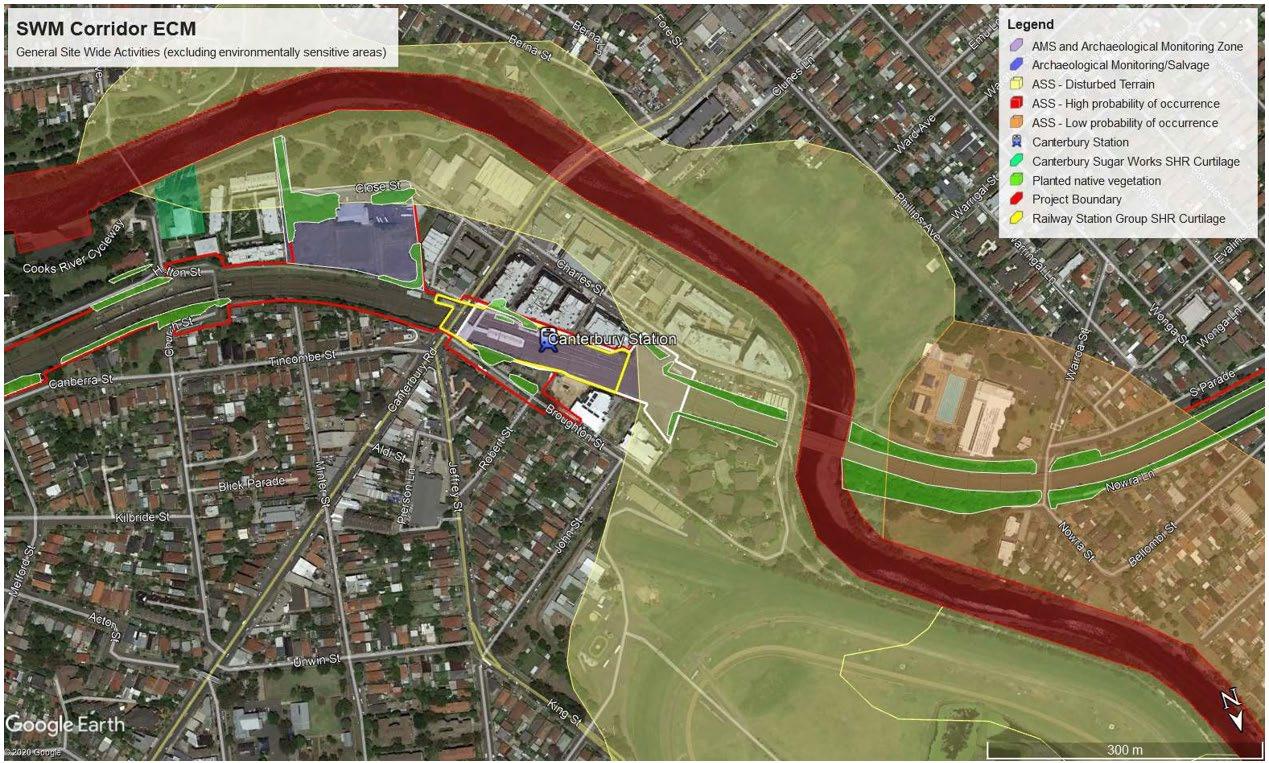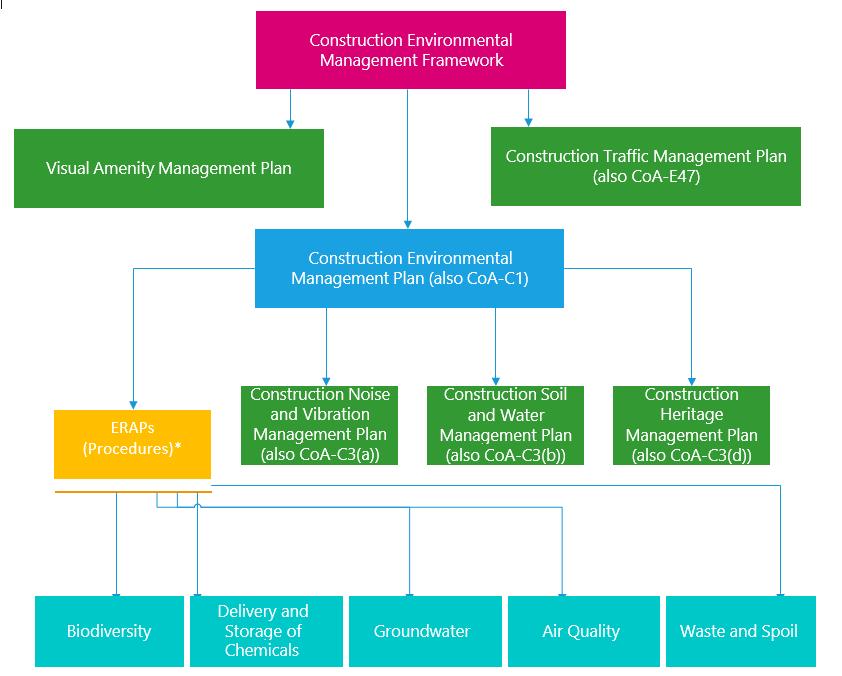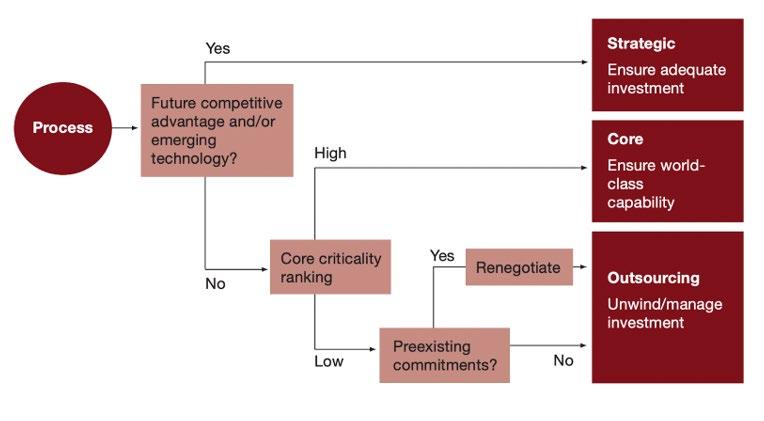
8 minute read
Figure 40: Machinery Histogram
Figure 40: Machinery Histogram
7.7 Staff Inductionand Training Plan, Performance Review, Staff Recognition and Rewards, Compliance, Equity and Safety
7.7.1 Staff Induction and Training Plan
7.7.1.1 Construction Induction – General Construction Induction Training
Any worker doing construction work in NSW must complete an approved construction safety awareness training course and obtain a "Construction Induction" (White) card, according to WorkCover NSW. All staff working at or visiting the Sydney Metro site must possess this card. Failure to do so may result in the person being requested to leave the construction site area immediately, and WorkCover NSW may take enforcement action.
7.7.1.2 Start-up Meetings & Site Inductions
Prior to the start of work, the Contractor's representatives and the Sydney Metro Responsible Officer shall undertake start-up meetings to ensure that all parties are fully informed of the requirements and undertakings (Sydney Metro, 2018).
The Contractor must attend a site induction that covers the following topics:
● Review and explanation of the Work Health and Safety Guidelines
● Specific site hazards and requirements. When site conditions have altered dramatically or when personnel status has changed, refresher site inductions will be required. The Sydney
Metro Group Induction form should be used to keep track of these site inductions, and once completed, it should be forwarded to the Sydney Metro Responsible Officer.
7.7.1.3 Contractor Work Health & Safety Induction Program
All contractors, subcontractors, and their workers working on the Sydney Metro construction must attend a General Safety Induction training course. Sydney Metro facilitates this introduction, which must be completed every two years. The contractor will be unable to access the sites if the induction is not accomplished. The induction will conclude with an assessment. A passing grade of 85% is required to receive a Sydney Metro Contractor Safety Induction Card. This personal card is valid for two years and must be carried at all times while onsite.
The General Safety Induction Program for Sydney Metro is aimed to:
● Ensure that all contractors, sub-contractors and their employees undertaking work recognize specific safety requirements and are able to work safely on all sites.
● Ensure that all staff members, customers and visitors are secured and kept away from various hazards.
● Provide a complete, precise and consistent safety message to all contractors, sub-contractors and their employees.
7.7.2 Performance Review
Facts, actual and credible examples, and first-hand observations are all important to bring together at the Performance Review (Humphrey, 2019). The following aspects need to be noted in executing the Performance Review:
● Hold the Performance Review in private to allow and reinforce privacy, as well as to create a comfortable environment.
● At the first 30, 60 and 90 days of a new employee's tenure, provide a "mini-version" of the
Performance Review.
● Provide a “mini-version” of the Performance Review at the first 30, 60 and 90 days of a new employee’s tenure. This evaluation may not be as thorough as an annual review, but it informs a new employee about their accomplishments early on and prepares them for what will become an annual event.
● Make a few good observations as well as some remarks regarding areas that need to be addressed.
● Include a discussion of expectations for performance and behaviour. If the employee has deviated from what is expected or from his or her own previous positive "standards," the leader should make this effort extremely evident.
● Encourage the employee to ask questions about any concerns or any need for clarification.
Encourage open discussion of those areas that the employee might feel differently than what was noted on the Performance Review.
● Involve the employee in a proactive goal-setting endeavour. Goals might be technical, attitudinal, or behavioural in nature, but they must be developed individually for each employee.
● Include a succinct but clear action plan that further drives goal achievement. This endeavour should specify the activity that the employee will take, the leadership support that will be provided, and the resources that will be required.
The Performance Review should, at the minimum, include the following areas:
● Past performance and productive positives from the previous Performance Review should be highlighted so that both the employee and the senior leader can identify how far the worker has progressed.
● Observed "negatives" or "improvement opportunities" that must be addressed, fixed, and improved.
● Specific aspects of the employee's performance that will be evaluated and examined. (Technical skills; task-related skills and knowledge; behaviour with co-workers, leaders, clients and vendors; problem-solving skills; attitude and willingness to grow; attendance history and adherence to corporate standards.)
● The employee's future effort, which is linked to all the above, must be addressed. Setting improvement goals and devising an action plan to achieve them are both part of this process.
● The employee should be given the opportunity to "self-assess." While the same
Performance Review document that the leader uses can be supplied to the employee, it does not have to be the exact same document.
7.7.3 Staff Recognition and Rewards
Rewards are awards granted to employees on the basis of tasks performed, which meet or surpass the project's initial goals (Nani & Apraku, 2016).
7.7.3.1 Basic pay
Basic pay (often referred to as basic salary) is practiced in rewarding performance. It is the most generally recognized and motivating reward for completing a construction task. Sydney Metro is working to create and strengthen a good basic wage system.
7.7.3.2 Verbal Praise
Verbal praise is a means of showing admiration or approval for someone. Every employee enjoys receiving some verbal appreciation from their superiors in front of their coworkers. This reward system is intertwined with the concept of recognition. It confirms that the employee is performing a good job and is valued as an asset to the team.
7.7.3.3 Promotion
Promotion is the term used to describe a move within an organisation to a position with more responsibility and, presumably, prominence. Employee behaviour is influenced by promotion opportunities, which encourages employees to develop higher talents to progress (Prasad, 2001). Increased basic pay, monitory allowances and other financial benefits are generally connected with higher positions.
7.7.3.4 Fringe benefits
A fringe benefit is a set of different rewards provided by a business to influence employee performance that are tax-free if certain requirements are met. Health insurance, life insurance, education reimbursement, childcare, and personal use of a company-owned vehicle are examples of fringe benefits (Booth and Frank, 1999). Despite the fact that these are not considered additional money paid to the employee, the employee's expenses have been decreased.
7.7.3.5 Compliance and Equity
Sydney Metro Sydenham to Bankstown is dedicated to fostering a diverse and inclusive workforce, as well as enhancing employment outcomes, retention rates, development opportunities, and career advancement for all employees. The project aims to increase the number of women in leadership positions as well as the participation of Aboriginal and Torres Strait Islander people in the workforce.
Sydney Metro aspires to create a workforce structure that reflects the variety of the NSW population. A diverse workforce can benefit the organisation by bringing a wide range of talents and experiences to the table, which can lead to innovations. The diversity of Sydney Metro's personnel is reported in compliance with the reporting requirements of the NSW Public Service Commission.
Sydney Metro introduced the 'we.SydneyMetro' programme from 2018, which aims to eliminate conscious and unconscious prejudices in the workplace by giving practical tools and support systems, as well as creating more inclusive teams. The programme focuses on the following topics:
● Women in leadership positions
● Aboriginal involvement
● LGBTI (lesbian, gay, bisexual, transgender, and intersex) inclusion
● Workplace flexibility
● Disability inclusion
8.0 Project Risk Management Plan
8.1 Plan Risk Management
8.1.1 Methodologies
The risk is an inevitable topic in any project. There are numerous tools, techniques and methods to deal with them, while it is important to figure out the right ones to maximize the efficiency and effectiveness of the risk management of Sydney Metro Project. For example, to make a complete list of all main risks involved in different project stages, checklists summarized from similar projects which also involves upgrading the train system to the metro system are referenced. Besides, tools such as Failure Mode and Effect Analysis, Fault Tree Analysis, and Probability and Consequence Analysis, are utilized to further analyze and evaluate risks. When allocating contingency on risks, Three Point Estimate coupled with Monte Carlo Simulation is chosen to assist decisions. Please note that the budget for foreseeable risks is included in the cost baseline as the contingency reserve, while the management reserve is for the unforeseeable events – which are not considered as ‘risks’ in the context of the Sydney Metro project.
Even though there are always some differences in methodologies for the risk management from project to project, the basic risk management process is extracted from the standard in the industry named ISO 31000: Risk Management Guidelines (2018). Although depicted as sequential in figure 41, the actual procedure will be carried out in a systematic and iterative manner. RMP's goal is to give suggestions to all stakeholders for establishing and implementing a thorough risk management strategy. It will integrate stakeholder perspectives, specialist expertise, historical data and additional investigation. Because risk transfer or avoid chances are limited during the construction process, it is advantageous to decrease the severity of as many risks as feasible. Potential hazards will be properly identified, analysed, and assessed, allowing for the prompt implementation of appropriate risk mitigation strategies. And these risks are conveyed and consulted concurrently, as well as continuously monitored and examined on a regular basis. Finally, assigning the contingency reserve to cost and schedule in order to manage the risk's probable pessimistic consequences when risk treatment is not feasible and the residual risk remains unacceptable.








